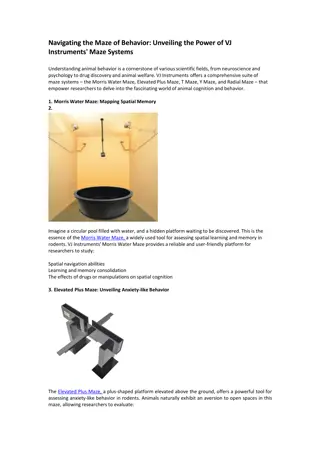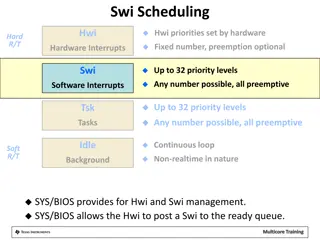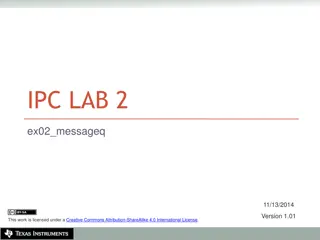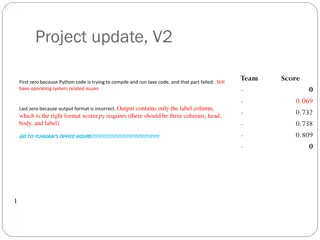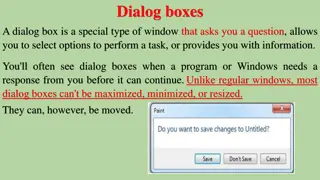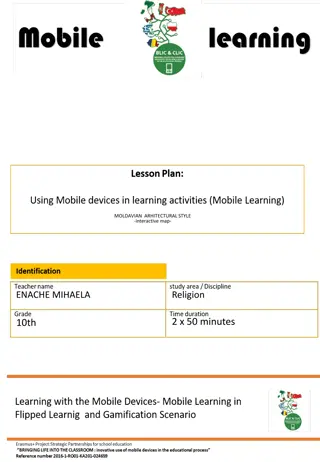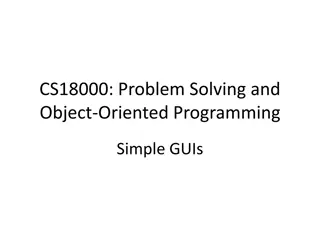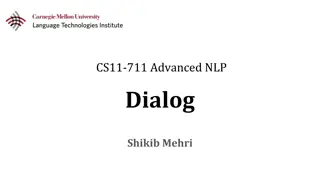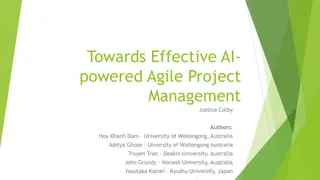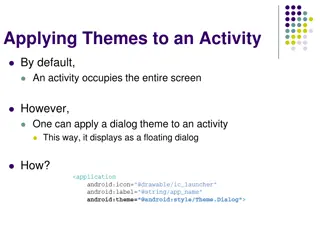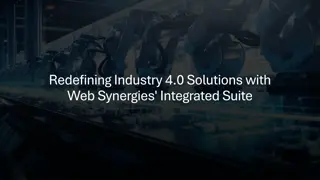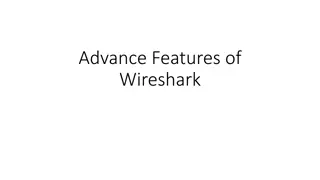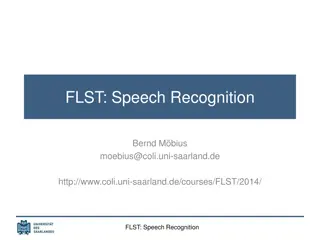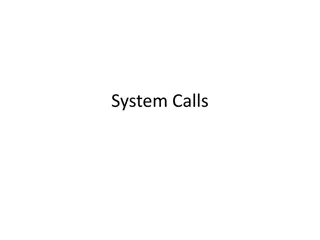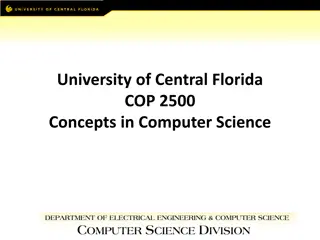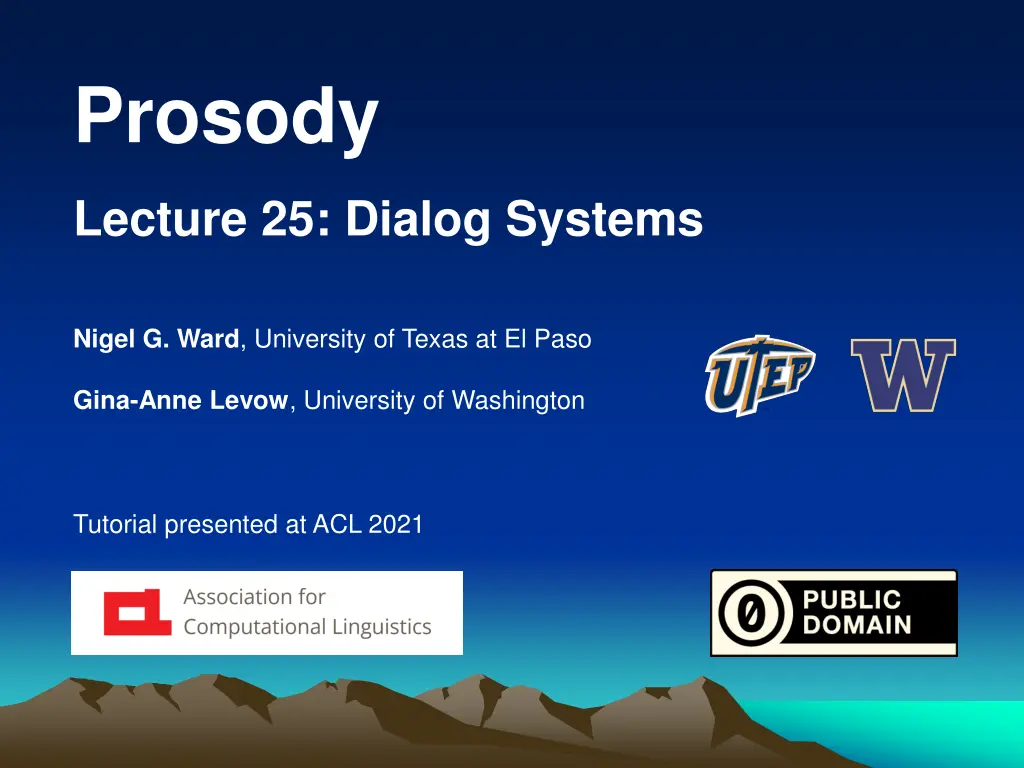
Cutting-Edge Dialog Systems and Speech Recognition
Explore the latest advancements in dialog systems and speech recognition technologies, including hopes for future interactions, system capabilities, and user-state awareness rules for improved learning outcomes. Learn about semantic decoding, dialog management, speech synthesis, and language generation in the digital world. Discover the potential for interactive engagement across various genres and the evolution towards more empathetic, adaptive systems.
Download Presentation

Please find below an Image/Link to download the presentation.
The content on the website is provided AS IS for your information and personal use only. It may not be sold, licensed, or shared on other websites without obtaining consent from the author. If you encounter any issues during the download, it is possible that the publisher has removed the file from their server.
You are allowed to download the files provided on this website for personal or commercial use, subject to the condition that they are used lawfully. All files are the property of their respective owners.
The content on the website is provided AS IS for your information and personal use only. It may not be sold, licensed, or shared on other websites without obtaining consent from the author.
E N D
Presentation Transcript
Prosody Lecture 25: Dialog Systems Nigel G. Ward, University of Texas at El Paso Gina-Anne Levow, University of Washington Tutorial presented at ACL 2021
Dialog Systems Hopes Today: we can exchange short monologs with systems Soon: systems we can interactively engage with Today: a few dozen genres (answering questions, obeying commands, reading bed-time stories, giving driving directions) Soon: systems for smalltalk, counseling, motivating, teaching, helping (Ward & DeVault, 2016; Marge, Espy-Wilson, Ward 2022)
Dialog System user digital world Wikimedia Commons robots need not apply Sensitive Empathetic Expressive Adaptive
Speech Recognition Semantic Decoding Dialog Management Speech Synthesis Language Generation
Speech Recognition Semantic Decoding Dialog Management reinforcing the message conveying pragmatic intents expressing the brand Speech Synthesis Language Generation
Speech Recognition Semantic Decoding Dialog Management Speech Synthesis Language Generation
Speech Recognition Semantic Decoding Dialog Management reactive turn taking and turn shaping Speech Synthesis Language Generation (Skantze, 2021; Nath & Ward, 2022)
Speech Recognition Semantic Decoding user state, goals, intentions Dialog Management Speech Synthesis Language Generation
User-State Awareness A response rule in the IT-Spoke Physics Tutor: When the user s answer is correct -> praise and move on is correct, but shows low confidence -> explain and ask again is incorrect -> explain and ask again Outcome: improved learning (Forbes-Riley & Litman, 2011)
Speech Recognition Semantic Decoding Dialog Management informative aware Speech Synthesis Language Generation
State-aware and user-aware output For a tutor quizzing a student good job Situation: {correct on a hard one, next one should be easier } User: {lacks confidence, needs more time, getting back on track } System wants the user to: {speed up, wait his turn, not give up } Ward & Escalante-Ruiz (2009)
Speech Recognition Semantic Decoding Dialog Management Speech Synthesis Language Generation
Success is Elusive 1. Scaling up is hard 2. Perfection is hard to achieve
Success is Elusive 1. Scaling up is hard 2. Perfection is hard to achieve and scary super-human prosodic abilities May take workers jobs Will enable new scams May increase human alienation
Contents Introduction Production, Perception Classic Linguistic Prosody Technology and Techniques Paralinguistics, Pragmatics 24. Speech Synthesis Technology, Part 2 25. Dialog Systems Perspectives
Contents Introduction Production, Perception Classic Linguistic Prosody Technology and Techniques 26. Individual Differences Paralinguistics, Pragmatics 27. Teaching Technology, Part 2 28. Historical Perspective Perspectives 29. Prospects
Speech Recognition Semantic Decoding Dialog Management prosody-informed next-utterance retrieval Speech Synthesis Language Generation
Informative, user-aware, effective output good job Ward & Escalante-Ruiz (2009)
Prosody in Dialog Systems emotional and responsiveness case-studies {accommodation/ responsiveness, confidence Error correction: narrow focus (contrastive focus) Signalling that you re in a correction subdialog
Speech Recognition Semantic Decoding Dialog Management Speech Synthesis Language Generation
Related Applications Summarization (prosody marks importance Filtering (prosody marks urgency) Sentiment Detection (prosody marks assessments) . . . speech mining may become commonplace

